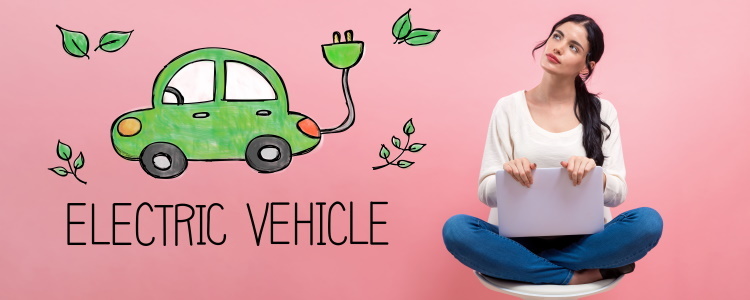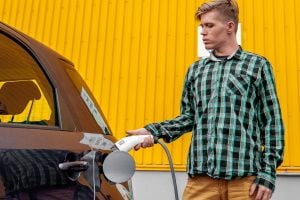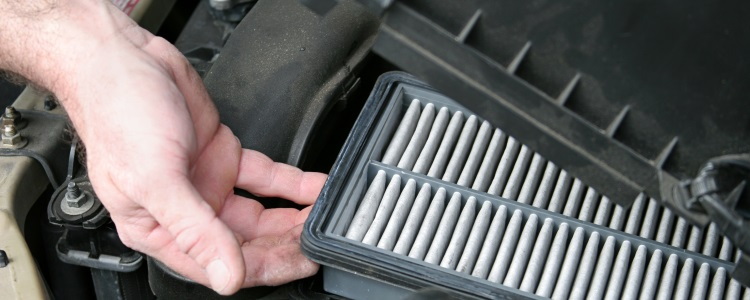Electric vehicles, or EVs, are rather different from their gas-powered counterparts. Here’s how an electric vehicle's care tasks are different, how to maintain its battery, and, some guidance on financing an EV with poor credit.

Care and Maintenance on an Electric Vehicle
Electric Car vs. Internal Combustion Engine Care
The good news is that regular maintenance on an electric car is typically easier than on an internal combustion engine because there’s simply less to maintain.
Here are some notable differences in EV care compared to conventional gas vehicles:
- Say goodbye to oil changes – Electric cars don’t require oil, so no more trips to the mechanic every three months. It can cost you anywhere between $20 and $100 for each oil change, depending on what needs to be done, which can save you at least four trips to the mechanic each year, and some cash on maintenance.
- Fewer parts to break – EVs don’t have mufflers, fuel injectors, fuel pumps, exhaust systems, spark plugs, and have fewer belts. Regularly maintaining those parts on a gas engine vehicle can be costly, not to mention inconvenient. Since there are fewer moving parts in your electric car to worry about, there’s less chance of something breaking that you need to fix and less maintenance cost for you to deal with.
There are still a few things you must care for in an electric car though, such as:
- Windshield wipers and fluid
- Brakes
- Cabin air filters
- Tires
- Steering and suspension
- Airbags
- Caring for the battery
Maintaining Your Electric Vehicle’s Battery
Electric cars are relatively simple: there’s a battery that powers the vehicle. It's the most critical part of your electric car, and how well you care for the battery can determine your vehicle’s longevity and long-term efficiency.
The most common battery in an electric car is a lithium-ion battery. It’s a rechargeable battery, and the more often you charge it, the less charge it holds over time – just like your phone's battery or other rechargeable devices. Rechargeable batteries have a limited lifespan, called a cycle life. Read your owner’s manual carefully for how often you should check the battery, its optimal charge, and more about its battery life cycle.
 Tips on maintaining your EV’s battery include:
Tips on maintaining your EV’s battery include:
- Avoid extreme temperatures – Batteries don’t do well in extreme heat or cold. When you’re able, keep your EV out of these extremes. Park indoors if possible, since extreme temperatures can reduce the battery’s range and cycle life.
- Charge when necessary – It’s typically recommended to keep your EV’s battery above 15% to 20% and below 75% to 80%. Keeping the car’s battery too low for too long can cause issues, and charging your battery too often can harm it as well. Lithium-ion batteries lose some of their charge over time, so the more you charge it, the less range they have long-term.
- Consider a home charger – Investing in a home charger can allow you to keep your EV charged at your own convenience. Fast chargers found in public spaces can allow you to charge your vehicle quickly, possibly around 200 miles per hour, but it’s often suggested to use fast chargers sparingly. Charging the battery too fast too often can strain it and contribute to battery wear.
- Other chargers to consider – Trickle chargers and timed chargers can help with battery degradation if your EV isn’t driven very often. Many timed chargers you can set to charge your car up to an optimal percentage. Trickle chargers are often recommended for cars parked for extended periods, since they charge the battery slowly and stop it from depleting while parked.
The biggest takeaway in battery care is don’t charge too often, and don’t let the battery deplete completely if you can manage it. The battery in an electric car is its most important part. Luckily, many manufacturer warranties on EV batteries cover up to eight years or 100,000 miles.
Can Bad Credit Borrowers Buy Electric Vehicles?
Electric cars are usually considered reliable vehicles, and they require less maintenance than standard fuel cars. Despite that, their resale value tends to be lower than conventional ICE vehicles. This is often attributed to drivers having range anxiety and preferring gas-powered cars. More rural areas may not have enough charging stations to give drivers peace of mind. Battery technology advances fast, too, making older models outdated more quickly. And over time, lithium batteries lose charging capacity so the older an EV is, the less range it’s likely to have.
However, they’re still great options for borrowers looking to go green and save money on gas, oil changes, and other regular maintenance.
Since a used electric car may be less expensive than a brand new one, a bad credit borrower may need to aim for a pre-owned one. It’s typically recommended for bad credit borrowers to finance used vehicles due to their lower sticker price. The less a borrower needs to finance, the less risk it is for the lender, and the less interest charges a borrower needs to pay. Borrowers with less than perfect credit tend to qualify for higher than average interest rates, as well, so keeping the finance amount lower is a good way to mitigate lots of interest charges.
For borrowers concerned about the battery life of a used EV, considering an electric certified pre-owned (CPO) vehicle from a franchised dealership may be a good route to explore. CPO cars are typically only a few years old, since many are just coming off-lease, and may still be covered under the manufacturer’s warranty which can ease some fears about battery range and maintenance.
Get Car Shopping!
Shopping for your next car loan typically starts with choosing a vehicle. However, if you have poor credit, you may need to look for a lender first – and that’s not as easy to nail down with credit challenges. But here at Auto Credit Express, we want to handle the task of finding you a dealer that’s signed up with bad credit auto lenders, or subprime lenders.
Dealerships that work with subprime lenders are called special finance dealerships. We’ve created a nationwide network of these dealers and we want to match you to one in your local area for free. Get started right now by completing our auto loan request form. There’s never an obligation to buy if you’re matched, so what are you waiting for?

Senior Auto Financing Editor
Suggested Posts For You
Receive Free Updates
Get the latest credit tips, resources and advice delivered straight to your inbox.













